Basics of Eco-Friendly Landscaping for Homeowners
Have you ever looked out at your yard and thought about how you can transform it into a lush, vibrant, and eco-friendly haven? Well, you’re in luck! This article dives into the essential concepts and practices that every homeowner should know when it comes to creating sustainable and environmentally friendly landscapes. Imagine stepping outside to a garden that not only looks stunning but also supports local wildlife and conserves natural resources. Sounds great, right? Let’s explore the techniques that can enhance the beauty of your outdoor space while promoting ecological health.
Eco-friendly landscaping is all about making choices that are sustainable and beneficial to the environment. It’s like giving Mother Nature a helping hand while you enjoy the aesthetic rewards of your efforts. The principles behind this approach focus on minimizing environmental impact and preserving our precious natural resources. By adopting eco-friendly landscaping practices, homeowners can contribute to the health of local ecosystems, making a positive impact on the planet. Think of it as planting seeds of change that will bloom into a healthier environment for generations to come.
When it comes to eco-friendly landscaping, choosing native plants is a game-changer. Native species are perfectly adapted to your local climate and soil conditions, which means they thrive with minimal intervention. Why should you care about using native plants? Well, for starters, they require less maintenance, which translates to less time spent watering, weeding, and fertilizing. Plus, they improve biodiversity by providing habitats for local wildlife. It’s like inviting your local ecosystem to your backyard party!
Native plants offer a plethora of ecological benefits that can significantly enhance your landscape. Here’s how:
- Support Local Wildlife: Native plants attract birds, butterflies, and other beneficial insects, creating a vibrant ecosystem right outside your door.
- Water Efficiency: These plants are well adapted to local rainfall patterns, meaning they require less water than non-native species.
- Reduced Fertilizer Needs: Native plants are naturally suited to the soil in your area, often needing little to no fertilizers.
By incorporating native plants into your landscape, you contribute to a healthier environment while enjoying a beautiful garden that flourishes with minimal effort.
One of the most delightful aspects of using native plants is their ability to attract essential pollinators like bees and butterflies. These creatures play a vital role in maintaining healthy ecosystems, as they help with the reproduction of many flowering plants. Imagine your garden buzzing with life, filled with colorful butterflies fluttering from flower to flower. To create a pollinator-friendly landscape, consider planting a variety of native flowers that bloom at different times throughout the year. This ensures that there’s always something for them to feast on!
Water conservation is a hot topic these days, and for good reason! With climate change affecting weather patterns, it’s crucial to adopt practices that reduce water consumption. Native plants are your best allies in this effort. Since they are adapted to your local climate, they often require significantly less irrigation than non-native species. By selecting these plants, you can create a stunning landscape while conserving water, which is a win-win for both your wallet and the environment.
Healthy soil is the foundation of any eco-friendly landscape. Think of it as the bedrock of your garden, supporting all the life above it. To improve soil health, consider techniques like composting, mulching, and using organic fertilizers. Composting not only enriches the soil but also reduces waste by recycling kitchen scraps and yard debris. Mulching helps retain moisture and suppress weeds, making your garden easier to maintain. By nurturing your soil, you set the stage for a thriving, sustainable landscape.
Efficient irrigation is crucial for conserving water in landscaping. Traditional methods can lead to significant water waste, but modern techniques offer smarter solutions. For instance, drip irrigation systems deliver water directly to the roots of plants, minimizing evaporation and runoff. This method not only saves water but also promotes healthier plants by providing consistent moisture levels. It’s like giving your plants a refreshing drink right where they need it most!
Drip irrigation is a fantastic way to ensure your plants receive the right amount of water without wasting a drop. Here are some advantages:
- Precision Watering: Water is delivered directly to the root zone, reducing evaporation.
- Reduced Weed Growth: Since water is applied only where needed, weeds are less likely to thrive.
- Improved Plant Health: Consistent moisture levels help prevent stress on plants.
By embracing drip irrigation, you can create an eco-friendly landscape that thrives while conserving water.
Another effective strategy for sustainable irrigation is rainwater harvesting. Collecting rainwater not only helps conserve water but also reduces your reliance on municipal supplies. Setting up a rainwater harvesting system can be as simple as installing a rain barrel to catch runoff from your roof. You can then use this collected water to irrigate your garden. It’s like capturing nature’s gift and using it to nurture your landscape!
1. What are the primary benefits of eco-friendly landscaping?
Eco-friendly landscaping promotes biodiversity, conserves water, reduces chemical use, and enhances the beauty of your outdoor space.
2. How do I start an eco-friendly landscape?
Begin by assessing your yard, choosing native plants, and implementing sustainable practices like composting and efficient irrigation.
3. Can I still have a beautiful garden using native plants?
Absolutely! Native plants can be just as beautiful as exotic species, and they often require less maintenance.
4. What is the best way to conserve water in my garden?
Utilizing native plants, implementing drip irrigation, and collecting rainwater are all effective methods for conserving water.

Understanding Eco-Friendly Landscaping
Eco-friendly landscaping is more than just a trend; it's a lifestyle choice that promotes sustainability and environmental stewardship. At its core, eco-friendly landscaping focuses on practices that not only beautify our homes but also minimize our ecological footprint. Imagine a garden that thrives with vibrant colors and life, all while supporting the health of our planet. This balance is achieved through thoughtful planning and an understanding of how our choices impact the environment.
One of the fundamental principles of eco-friendly landscaping is to work with nature rather than against it. This means utilizing native plants, which are naturally adapted to the local climate and soil conditions. By choosing plants that have evolved in the region, homeowners can create a landscape that is low maintenance and resilient. These plants require less water, fertilizer, and pesticide, which not only saves time and money but also reduces chemical runoff into local waterways.
Furthermore, eco-friendly landscaping emphasizes the importance of biodiversity. A diverse garden supports a variety of wildlife, including birds, insects, and small mammals. By creating habitats for these creatures, we can foster a thriving ecosystem right in our backyards. For instance, incorporating a mixture of plants, trees, and shrubs can provide food and shelter for pollinators like bees and butterflies, which are essential for the pollination of many crops and wild plants.
Another vital aspect of eco-friendly landscaping is the conservation of resources. This involves implementing practices that reduce water usage and promote soil health. Techniques such as composting and mulching can enhance soil fertility and structure, making it more capable of retaining moisture and nutrients. By improving soil health, homeowners can ensure that their plants grow strong and healthy without the need for synthetic fertilizers.
In summary, understanding eco-friendly landscaping is about recognizing the interconnectedness of our gardens and the environment. By making conscious choices, we can create beautiful landscapes that not only enhance our homes but also contribute to the health of our planet. It's a win-win situation: a stunning garden that supports local wildlife and conserves precious resources. So, why not take the plunge and start your eco-friendly landscaping journey today?
- What is eco-friendly landscaping? Eco-friendly landscaping refers to practices that enhance the beauty of outdoor spaces while minimizing environmental impact.
- Why should I use native plants? Native plants are adapted to local conditions, requiring less water and maintenance, and they support local wildlife.
- How can I improve my soil health? Techniques such as composting, mulching, and using organic fertilizers can significantly enhance soil fertility and structure.
- What are some efficient irrigation methods? Drip irrigation and rainwater harvesting are effective ways to conserve water in landscaping.
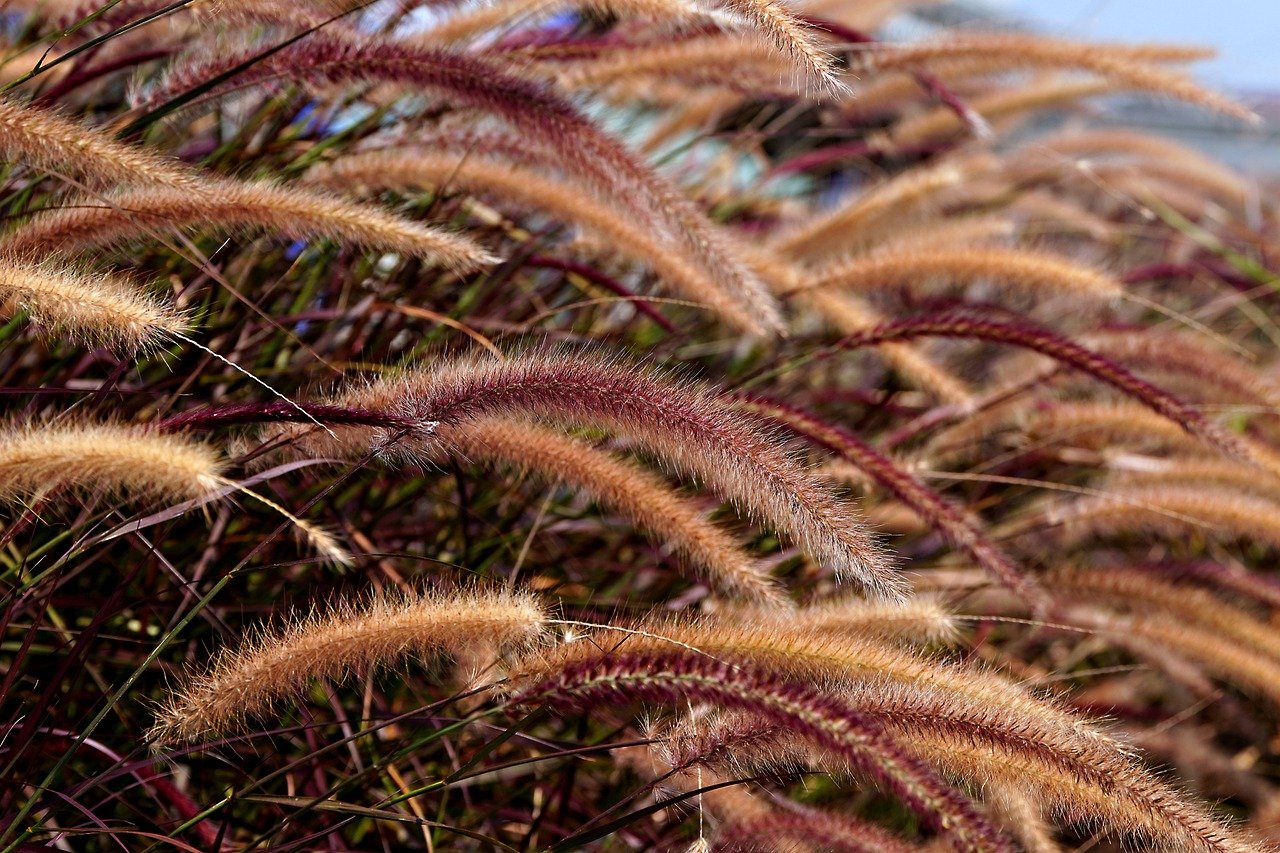
Choosing Native Plants
When it comes to crafting an eco-friendly landscape, one of the most important decisions you'll make is choosing the right plants. Native plants are not just beautiful; they are the unsung heroes of sustainable gardening. By opting for species that are indigenous to your area, you're essentially inviting nature into your backyard. But why should you care about native plants? Well, for starters, they require significantly less maintenance compared to non-native species. Imagine spending less time watering, fertilizing, and weeding, all while enjoying a vibrant garden that thrives naturally in your local climate!
Another fantastic benefit of native plants is their ability to support local biodiversity. These plants have evolved over thousands of years to adapt to the specific conditions of your region, making them perfectly suited to flourish in your garden. They provide essential habitats and food sources for various wildlife, including birds, insects, and other critters. In fact, studies have shown that landscapes dominated by native species can support up to 50% more wildlife than those filled with non-native varieties. That's not just a win for you; it's a win for the entire ecosystem!
Now, let's talk about resilience. Native plants are like the superheroes of the plant world; they can withstand local pests, diseases, and climate fluctuations without the need for chemical interventions. This resilience not only makes your gardening experience easier but also contributes to a healthier environment. By reducing the need for pesticides and fertilizers, you're doing your part in minimizing chemical runoff that can pollute local waterways.
But how do you go about selecting the right native plants for your landscape? Start by researching which species are native to your region. Local extension services, botanical gardens, and native plant societies can provide invaluable resources. Once you have a list, consider the following factors:
- Soil Type: Different plants thrive in different soil conditions. Make sure to choose plants that are suited to the soil type in your garden.
- Sunlight Exposure: Assess how much sunlight your garden receives throughout the day. Some native plants prefer full sun, while others thrive in shade.
- Water Requirements: Be mindful of how much water your selected plants will need. Group plants with similar water needs together to make irrigation easier.
Incorporating native plants is not just about aesthetics; it's about creating a sustainable environment that benefits both you and the wildlife around you. Imagine a garden buzzing with bees and butterflies, where every bloom contributes to the local ecosystem. It's like throwing a party for nature, and everyone is invited!
To sum it all up, native plants offer a plethora of ecological benefits that can transform your garden into a thriving ecosystem. They help in:
| Benefit | Description |
|---|---|
| Support Wildlife | Provide food and habitat for local fauna. |
| Reduce Maintenance | Require less watering and fertilization. |
| Enhance Biodiversity | Encourage a diverse range of species to thrive. |
| Improve Soil Health | Contribute to healthier soil through natural processes. |
So, if you're ready to make a change that benefits both your garden and the planet, start exploring the wonderful world of native plants. Your eco-friendly landscape awaits!
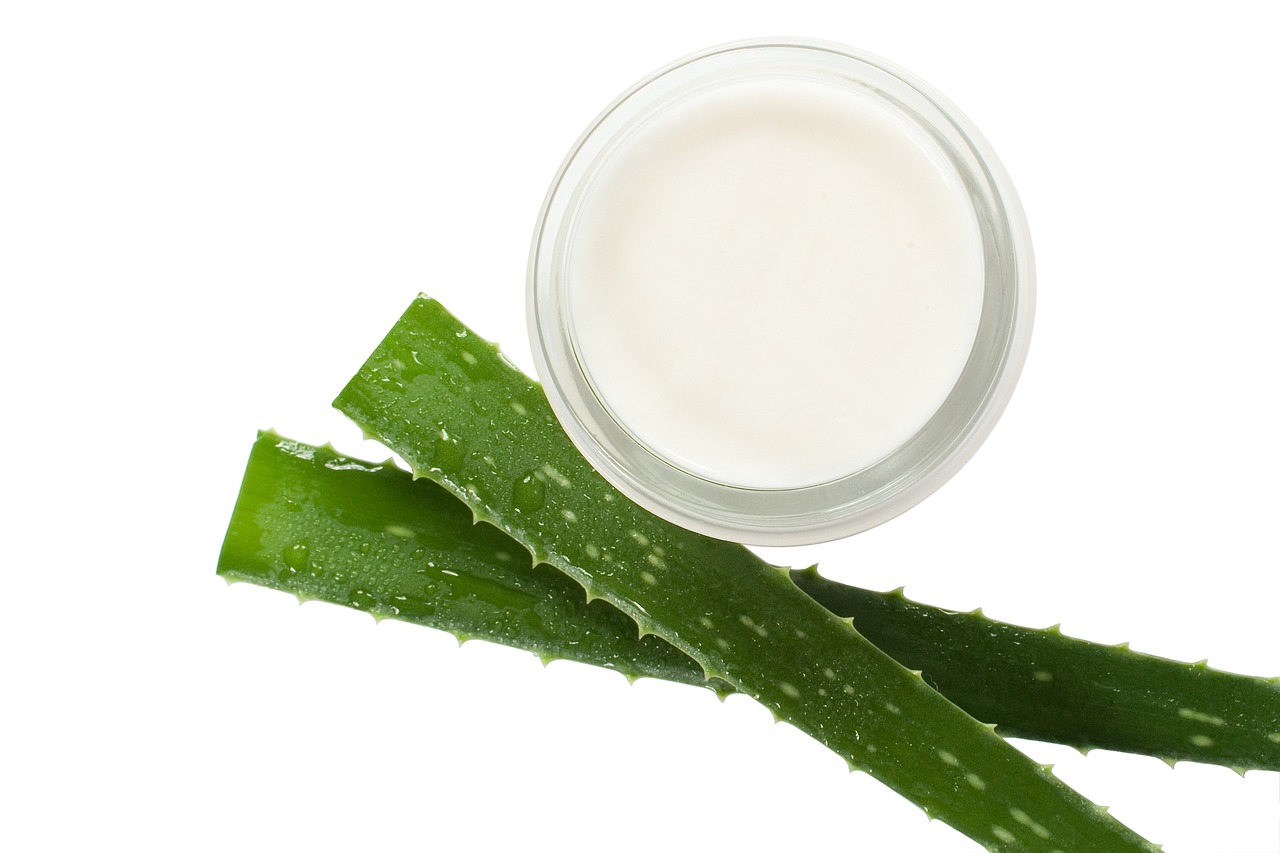
Benefits of Native Plants
When it comes to creating a sustainable landscape, native plants are like the superheroes of the gardening world. These plants are not just beautiful; they are also incredibly beneficial for our environment. First off, native plants are perfectly adapted to the local climate and soil conditions, which means they thrive without the need for excessive watering or chemical fertilizers. Imagine a garden that flourishes naturally, where you spend less time worrying about watering schedules and more time enjoying the beauty around you!
One of the biggest advantages of choosing native plants is their ability to support local wildlife. By incorporating these species into your landscape, you create a habitat for birds, butterflies, and beneficial insects. For instance, many native plants produce seeds and nectar that are vital food sources for these creatures. In fact, studies have shown that gardens filled with native plants can attract up to three times more wildlife than those with non-native species. This biodiversity is crucial for maintaining a balanced ecosystem and ensuring that local wildlife populations thrive.
Additionally, native plants are champions when it comes to reducing water usage. Because they are adapted to the local environment, they require significantly less water than non-native species. This is especially important in areas prone to drought or where water conservation is a priority. By choosing native plants, you can drastically cut down on your water bill while still enjoying a lush and vibrant garden. It's like having your cake and eating it too—beautiful landscapes without the guilt of overwatering!
Another fantastic benefit of native plants is their resilience against local pests and diseases. Unlike exotic species, which often struggle to adapt and can become more vulnerable to local pests, native plants have evolved alongside these challenges. This means they typically require fewer pesticides, making your garden not only safer for the environment but also healthier for you and your family. You can breathe easy knowing that your garden is a haven for nature, free from harmful chemicals.
In summary, the benefits of native plants are not just limited to their beauty. They play a vital role in supporting biodiversity, conserving water, and reducing the need for chemical interventions. By choosing native species for your landscape, you are making a conscious choice to protect the environment while enhancing the aesthetic appeal of your home. It’s a win-win situation that every homeowner should consider!
- What are native plants? Native plants are species that naturally occur in a specific region or ecosystem, having adapted to the local climate and soil conditions.
- Why should I choose native plants for my garden? Native plants require less maintenance, conserve water, support local wildlife, and are more resilient to local pests and diseases.
- How do native plants benefit local wildlife? They provide essential food sources and habitats for birds, insects, and other wildlife, promoting biodiversity.
- Can I grow native plants in any type of garden? Yes! Native plants can be incorporated into various garden styles, from formal landscapes to wildflower gardens.
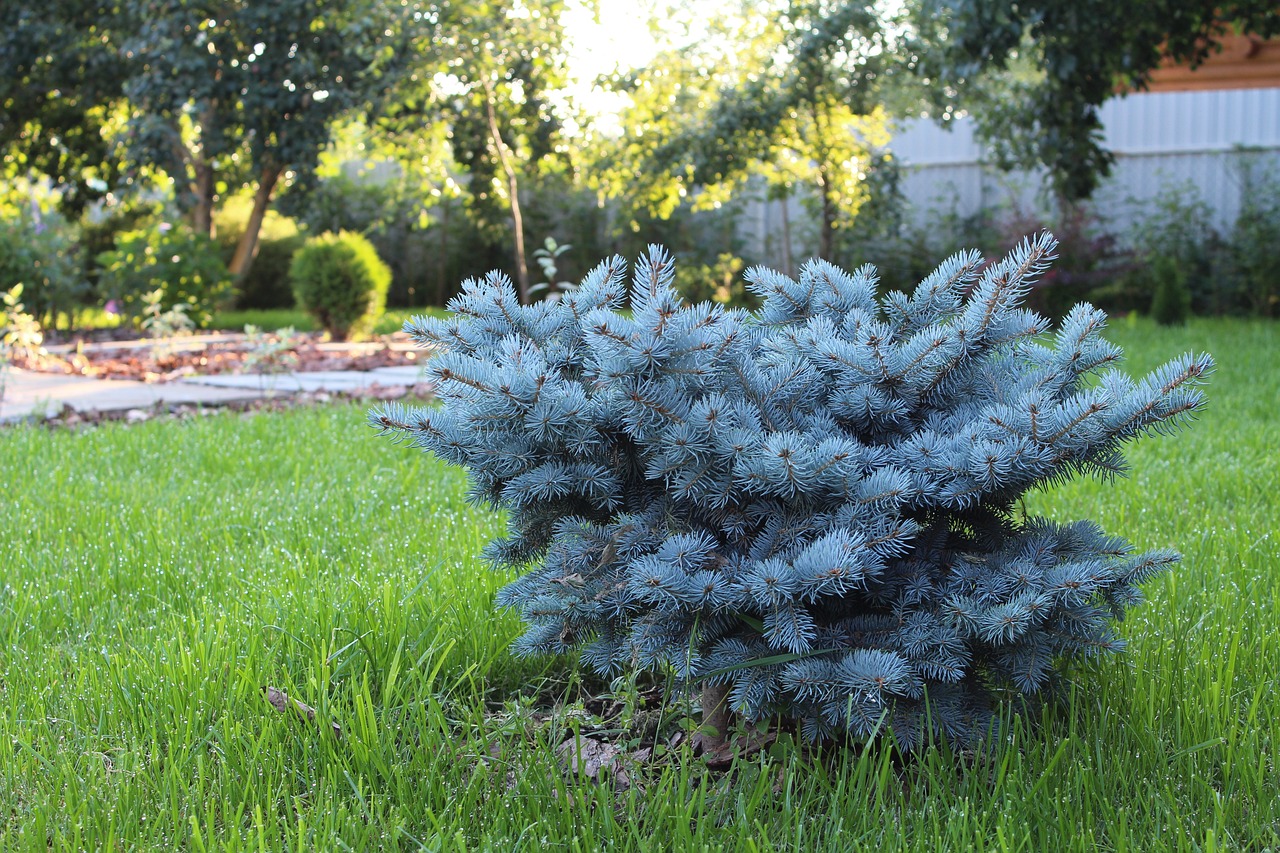
Attracting Pollinators
When you think about your garden, do you picture it bustling with life? One of the best ways to achieve this vibrant atmosphere is by like bees, butterflies, and hummingbirds. These little creatures play a crucial role in our ecosystem, helping plants reproduce and ensuring the health of our food supply. By creating a pollinator-friendly landscape, you’re not just beautifying your home; you’re also contributing to the overall health of the environment.
So, how can you transform your yard into a sanctuary for these essential beings? First, consider incorporating a variety of native plants. Native species are naturally adapted to your local climate and soil, making them more resilient and less dependent on chemical fertilizers and pesticides. This means they can thrive with minimal intervention while providing a rich source of nectar and pollen. Some popular native plants that attract pollinators include coneflowers, milkweed, and black-eyed Susans.
But it’s not just about the plants you choose; it’s also about the layout of your garden. Pollinators are more likely to visit gardens that offer a diverse array of flowers blooming at different times throughout the growing season. This ensures a steady food supply from early spring to late fall. You might create a pollinator garden by grouping plants in clusters rather than scattering them throughout your landscape. This technique makes it easier for pollinators to find food sources, much like a buffet laid out for a feast!
Additionally, consider the importance of creating habitats for these creatures. Pollinators need safe places to rest and nest. You can provide these by leaving some areas of your garden a little wild. Piles of leaves, logs, or even a small patch of bare soil can serve as perfect homes for ground-nesting bees. By allowing parts of your yard to grow a bit untamed, you’re giving pollinators a place to thrive.
Finally, it's essential to avoid using harmful pesticides. While it might be tempting to keep pests at bay, many common pesticides can also harm beneficial pollinators. Instead, opt for organic pest control methods, such as introducing beneficial insects like ladybugs or using natural repellents. By safeguarding these pollinators, you're ensuring that your garden remains a lively, buzzing haven.
In summary, attracting pollinators to your eco-friendly landscape is not only beneficial for the environment but also enhances the beauty and health of your garden. By choosing native plants, creating diverse habitats, and avoiding harmful chemicals, you can foster a vibrant ecosystem right in your backyard. Imagine the joy of watching butterflies flutter by and bees busily collecting nectar—it's a delightful sight that also supports our planet's health!
- What are the best native plants for attracting pollinators? Some excellent choices include coneflowers, milkweed, and black-eyed Susans.
- How can I create a habitat for pollinators in my garden? Leave areas a little wild, add logs or brush piles, and ensure you have a mix of flowering plants.
- Are there any pesticides safe for pollinators? It's best to avoid pesticides altogether; if necessary, choose organic options and apply them at night when pollinators are less active.
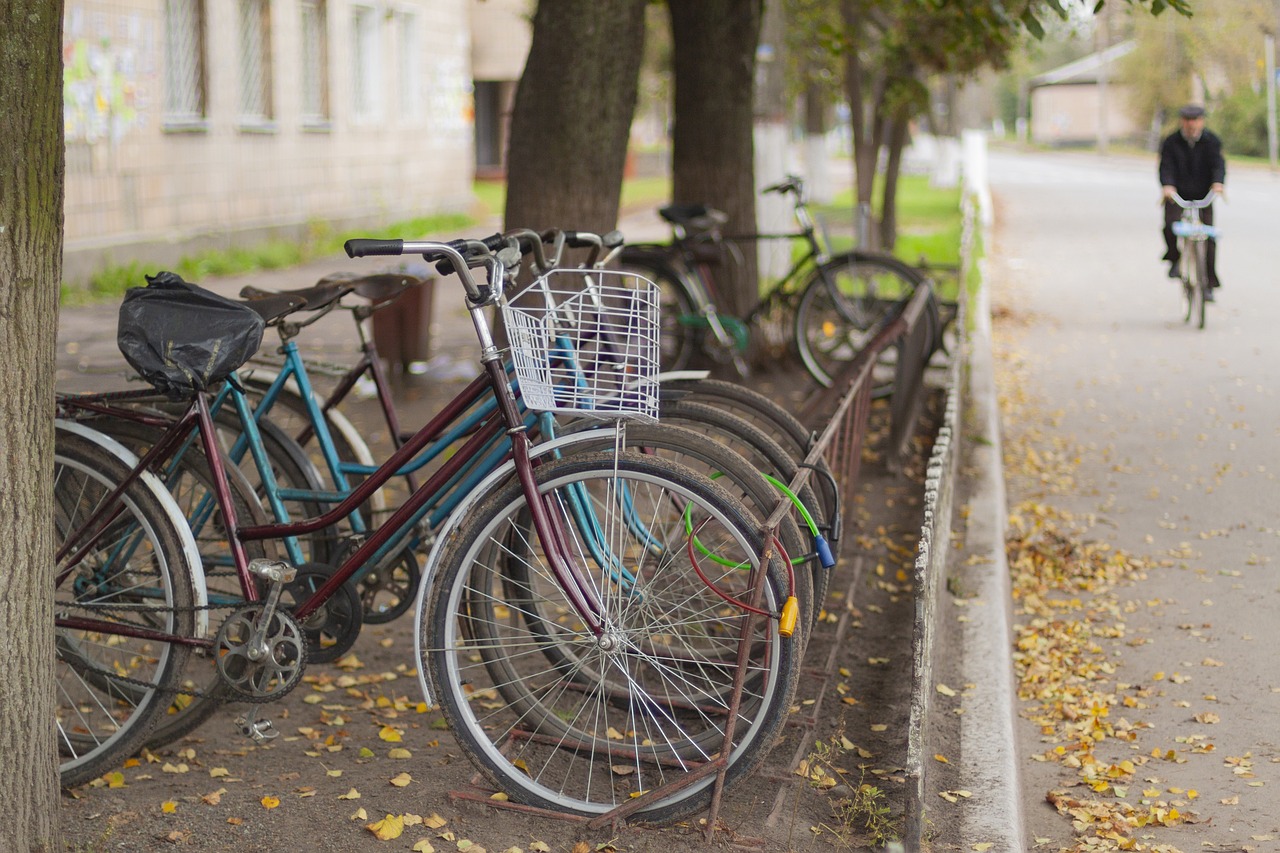
Reducing Water Usage
One of the most significant advantages of incorporating native plants into your landscape is their ability to reduce water usage. These plants have evolved over thousands of years to thrive in their local climates, which means they are often perfectly adapted to the natural rainfall patterns and soil conditions of your area. By choosing native species, you can create a garden that not only looks beautiful but also requires considerably less water than traditional landscaping choices. Imagine a garden that flourishes without the constant need for watering—sounds appealing, right?
To put this into perspective, consider the following: native plants typically need 50-75% less water than non-native varieties. This translates into significant savings on your water bill and a reduced environmental footprint. For homeowners in regions prone to drought or water restrictions, this can be a game changer. So, how do you go about selecting and implementing these water-efficient plants in your landscape?
Start by researching which native plants are best suited for your specific region. Many local extension offices and botanical gardens offer resources to help you identify the right species. Once you have a list, consider grouping plants with similar water needs together. This practice, known as hydrozoning, helps ensure that you’re not over-watering some plants while under-watering others. Additionally, when planting, make sure to amend your soil with organic matter to improve its structure and moisture retention capabilities. Healthy soil acts like a sponge, absorbing and holding onto water, which means your plants will have access to moisture even during dry spells.
Moreover, adopting mulching techniques can further enhance water conservation. A layer of mulch not only suppresses weeds but also reduces evaporation from the soil. This simple practice can keep your plants hydrated longer and decrease the frequency of watering. You can use organic materials like wood chips, straw, or even grass clippings as mulch, adding nutrients back into the soil as they decompose.
In summary, reducing water usage in your landscape is achievable through careful planning and the right plant choices. By selecting native plants, employing hydrozoning, improving soil health, and utilizing mulch, you can create a sustainable garden that conserves water while thriving beautifully. It's a win-win situation for both your garden and the environment!
- What are the best native plants for my area?
Research local resources such as extension services or native plant societies to find plants that thrive in your region.
- How much water do native plants really save?
Native plants can require 50-75% less water than traditional non-native plants, depending on the species and local climate.
- Can I still have a colorful garden with native plants?
Absolutely! Many native plants offer vibrant colors and beautiful blooms that can enhance the aesthetic appeal of your landscape.
- How often should I water native plants?
Initially, you may need to water them regularly until they are established. After that, they typically require less frequent watering.

Creating Sustainable Soil
When it comes to eco-friendly landscaping, one of the most critical components is the health of your soil. Think of soil as the foundation of a house; without a solid base, everything else falls apart. Sustainable soil is rich in nutrients, supports diverse microorganisms, and promotes healthy plant growth. But how do we achieve this? The answer lies in a combination of practices that enhance soil quality while being gentle on the environment.
One effective method for creating sustainable soil is composting. By recycling organic materials like kitchen scraps, yard waste, and leaves, you can create nutrient-dense compost that feeds your plants and improves soil structure. This process not only reduces waste but also enriches the soil with essential nutrients, enabling your garden to thrive without the need for synthetic fertilizers. Imagine your garden as a vibrant ecosystem where everything works in harmony, and composting is the secret ingredient that keeps it all balanced.
Another essential practice is mulching. Applying a layer of organic mulch, such as wood chips or straw, helps retain moisture, suppress weeds, and gradually adds nutrients to the soil as it breaks down. Mulching is like giving your garden a cozy blanket that protects it from harsh weather conditions while nourishing the soil beneath. Plus, it looks great and can enhance the aesthetic appeal of your landscape!
Using organic fertilizers is also a key component in creating sustainable soil. Unlike conventional fertilizers that can leach into waterways and harm local ecosystems, organic options are derived from natural sources and improve soil health over time. They promote the growth of beneficial microbes and improve soil structure, making it easier for plants to access nutrients. Consider this: when you use organic fertilizers, you’re not just feeding your plants; you’re feeding the entire ecosystem that supports them.
Additionally, practicing crop rotation and cover cropping can vastly improve soil health. By rotating different types of plants each season, you can prevent soil depletion and reduce pest problems. Cover crops, such as clover or rye, can be planted during off-seasons to protect and enrich the soil. These practices are like giving your soil a chance to breathe and recover, ensuring it remains fertile and productive year after year.
In summary, creating sustainable soil is all about nurturing the ground beneath your feet. By composting, mulching, using organic fertilizers, and implementing crop rotation and cover cropping, you can build a healthy, vibrant soil ecosystem that supports your eco-friendly landscaping goals. Remember, healthy soil leads to healthy plants, and a thriving garden is a beautiful sight to behold!
- What is the best way to start composting? Begin by collecting kitchen scraps and yard waste, layering them in a compost bin, and turning the pile regularly to aerate it.
- How often should I mulch my garden? It's best to refresh your mulch layer annually, especially in the spring, to maintain its effectiveness.
- Can I use synthetic fertilizers in an eco-friendly landscape? While it's possible, it's recommended to use organic fertilizers to support a healthier ecosystem.
- What are cover crops, and why should I use them? Cover crops are plants grown during off-seasons to protect and enrich the soil, preventing erosion and nutrient loss.

Implementing Efficient Irrigation Systems
When it comes to eco-friendly landscaping, one of the most crucial aspects is implementing efficient irrigation systems. Traditional watering methods can lead to significant water waste, but by adopting smarter techniques, homeowners can conserve this precious resource while still keeping their gardens lush and vibrant. Imagine a garden that thrives on minimal water, where every drop counts, and plants flourish without the constant need for a deluge. This is not just a dream; it can be your reality with the right irrigation strategies!
One of the most effective methods for conserving water is through drip irrigation. This system delivers water directly to the roots of plants, which means less evaporation and runoff. Picture a tiny, slow-moving stream that nurtures each plant individually, ensuring they receive just the right amount of moisture. Not only does this method save water, but it also improves plant health by preventing overwatering, which can lead to root rot and other issues. According to studies, drip irrigation can reduce water usage by up to 50% compared to traditional sprinklers. Isn’t that a remarkable way to contribute to sustainability?
Another fantastic approach is rainwater harvesting. This technique involves collecting rainwater from roofs and other surfaces and storing it for later use. It’s like capturing nature’s gift in a bucket! Homeowners can set up simple systems using barrels or tanks to collect rainwater, which can then be used to irrigate gardens during dry spells. Not only does this reduce reliance on municipal water supplies, but it also helps to manage stormwater runoff, which can be a significant environmental concern. Imagine transforming your home into a mini-ecosystem where every drop of rain is utilized efficiently!
To illustrate the advantages of these systems, let’s take a look at a comparison of traditional watering methods versus drip irrigation and rainwater harvesting:
| Aspect | Traditional Watering | Drip Irrigation | Rainwater Harvesting |
|---|---|---|---|
| Water Efficiency | Low | High | High |
| Cost | Low Initial Cost | Higher Initial Cost | Varies (Setup Costs) |
| Maintenance | Low | Moderate | Moderate to High |
| Environmental Impact | Negative | Positive | Positive |
As you can see, the benefits of drip irrigation and rainwater harvesting far outweigh those of traditional methods. While the initial investment for these systems may be higher, the long-term savings on water bills and the positive impact on the environment make them worthwhile. Plus, you’ll have the satisfaction of knowing that you are doing your part to protect our planet.
Incorporating efficient irrigation systems into your landscaping not only promotes sustainability but also enhances the overall beauty of your garden. Imagine walking through a vibrant landscape that is not only beautiful but also thriving due to responsible water use. It’s a win-win situation! So why not take the plunge and implement these innovative irrigation techniques in your own backyard?
- What is the best irrigation system for a small garden? Drip irrigation is often considered the best option for small gardens due to its efficiency and ability to deliver water directly to the roots.
- How can I set up a rainwater harvesting system? You can start by installing rain barrels under your downspouts to collect rainwater, which can then be used for irrigation.
- Can I convert my existing irrigation system to a more efficient one? Yes, many traditional systems can be upgraded to drip irrigation or combined with rainwater harvesting solutions for improved efficiency.

Drip Irrigation Advantages
Drip irrigation is often hailed as one of the most efficient watering methods available for homeowners looking to maintain an eco-friendly landscape. Imagine a system that delivers water directly to the roots of your plants, ensuring that every drop counts! This method not only conserves water but also enhances plant health, making it a win-win for both your garden and the environment.
One of the primary advantages of drip irrigation is its ability to minimize water waste. Traditional watering methods, such as sprinklers, can lead to significant evaporation and runoff, especially during hot summer days. With drip irrigation, water is delivered slowly and precisely, reducing the chances of evaporation and allowing the soil to absorb moisture more effectively. This targeted approach means that plants receive a steady supply of water without the excess that often leads to soggy soil or waterlogging.
Furthermore, drip irrigation systems can be tailored to suit the specific needs of different plants. For example, some plants thrive on more moisture, while others prefer drier conditions. With a drip irrigation system, you can adjust the flow rates and timing for each plant type, ensuring that all your plants receive the optimal amount of water they need to flourish. This customization not only promotes healthier plants but also contributes to a more resilient garden overall.
Additionally, drip irrigation can help prevent weed growth. When water is applied directly to the root zone of plants, the surrounding soil remains drier, making it less hospitable for weeds to germinate. This means less time spent on weeding and more time enjoying your lush, vibrant landscape. Plus, with less competition from weeds, your plants can absorb nutrients more effectively, leading to stronger and more productive growth.
Another significant benefit of drip irrigation is its contribution to soil health. By delivering water slowly, this method encourages deep root growth, which is essential for plants to access nutrients and moisture from deeper soil layers. Over time, this can lead to improved soil structure and fertility, creating a thriving ecosystem right in your backyard. Healthy soil is the backbone of any successful garden, and drip irrigation plays a crucial role in maintaining that health.
To illustrate the advantages of drip irrigation, consider the following table that compares it with traditional watering methods:
| Feature | Drip Irrigation | Traditional Sprinklers |
|---|---|---|
| Water Efficiency | High | Moderate |
| Targeted Delivery | Yes | No |
| Weed Growth | Reduced | Encouraged |
| Soil Health | Improved | Variable |
| Installation Complexity | Moderate | Simple |
In conclusion, adopting a drip irrigation system can significantly enhance your eco-friendly landscaping efforts. By conserving water, promoting healthy plant growth, and reducing weed competition, this method stands out as a sustainable choice for any homeowner. So, if you're looking to make a positive impact on your garden's health and the environment, consider investing in a drip irrigation system. It’s like giving your plants a refreshing drink right when they need it most!
What is drip irrigation?
Drip irrigation is a watering method that delivers water directly to the roots of plants through a network of tubing and emitters. This system minimizes water waste and promotes healthy plant growth.
How does drip irrigation save water?
By applying water directly to the plant roots, drip irrigation reduces evaporation and runoff, ensuring that more water is absorbed by the plants. This targeted approach allows for precise control over water usage.
Can I use drip irrigation for all types of plants?
Yes, drip irrigation can be customized to meet the needs of various plants. You can adjust the flow rates and timing to ensure that each plant receives the right amount of water.
Is it difficult to install a drip irrigation system?
While the installation of a drip irrigation system can be more complex than traditional sprinklers, many homeowners find it manageable with the right resources and guidance. There are also professional services available to assist with installation.
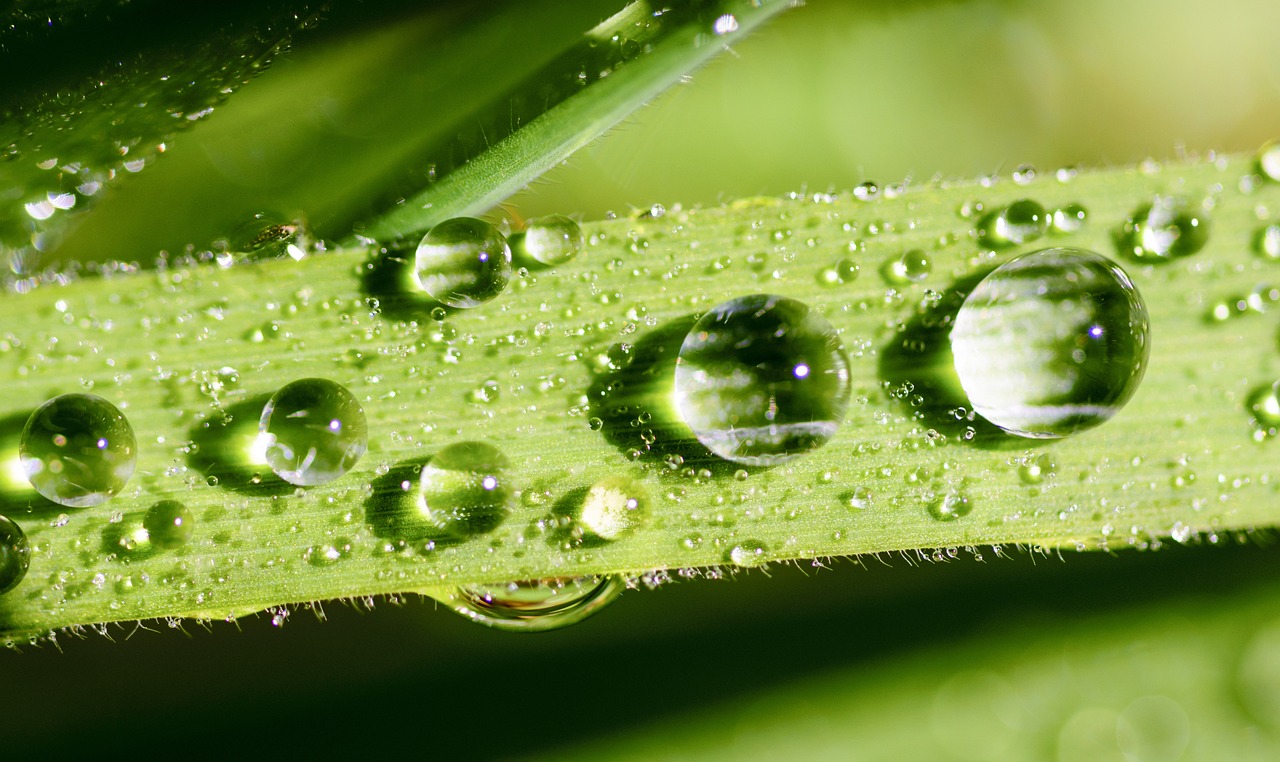
Rainwater Harvesting Techniques
Rainwater harvesting is an innovative and sustainable practice that allows homeowners to capture and utilize rainwater for various purposes. This technique not only helps in conserving water but also reduces the burden on municipal water supplies. By collecting rainwater, you can create a reliable source for irrigation, washing, and even indoor uses, depending on your filtration system. Imagine turning your roof into a rainwater collector, transforming a natural resource that often goes to waste into a valuable asset for your home!
To get started with rainwater harvesting, you’ll need a few key components. The most critical element is a collection system, typically made up of gutters and downspouts that direct rainwater from your roof into storage containers. These containers can range from simple barrels to sophisticated underground tanks, depending on your needs and budget. Let’s delve into some effective techniques to implement rainwater harvesting in your landscape:
- Gutter Systems: Ensure your gutters are clean and functioning properly to maximize water collection. Regular maintenance is essential to prevent blockages and overflow.
- Storage Solutions: Choose the right storage containers. Rain barrels are a popular choice for small gardens, while larger systems may require cisterns or underground tanks.
- Filtration: Incorporate a filtration system to remove debris and contaminants from the collected rainwater. This step is crucial, especially if you plan to use the water for indoor purposes.
- Overflow Management: Design an overflow system to handle excess water during heavy rain. This could be a diversion to a garden bed or a drainage system to prevent flooding.
Once you have your system set up, consider how you can integrate rainwater use into your daily routine. For instance, you can connect your rain barrels to a drip irrigation system in your garden, ensuring your plants receive the hydration they need without wasting a drop. Alternatively, collected rainwater can be used for washing cars, outdoor cleaning, or even flushing toilets, significantly reducing your overall water consumption.
Moreover, rainwater harvesting can be a beautiful addition to your landscape. You can create a rain garden, which is a planted depression that allows rainwater runoff to be absorbed. This not only helps manage stormwater but also provides a habitat for local wildlife and enhances the aesthetic appeal of your yard. Picture vibrant flowers and lush greenery thriving on naturally collected rainwater, all while supporting the environment!
In conclusion, rainwater harvesting is not just a practical water conservation method; it’s a step towards a more sustainable lifestyle. By implementing these techniques, you can contribute to environmental preservation while enjoying the benefits of reduced water bills and a healthier garden. So why wait? Start your rainwater harvesting journey today and transform your home into an eco-friendly oasis!
1. What is rainwater harvesting?
Rainwater harvesting is the collection and storage of rainwater for reuse, typically for irrigation, washing, or even indoor use after proper filtration.
2. Do I need a permit to install a rainwater harvesting system?
It depends on your local regulations. Some areas may require permits, while others may have guidelines you need to follow. Always check with your local authorities before installation.
3. How much rainwater can I collect?
The amount of rainwater you can collect depends on the size of your roof and the amount of rainfall in your area. A general rule of thumb is that one inch of rain on a 1,000-square-foot roof can yield approximately 600 gallons of water.
4. Is harvested rainwater safe to drink?
With proper filtration and treatment, harvested rainwater can be made safe for drinking. However, it's essential to follow local health guidelines and regulations regarding potable water.
Frequently Asked Questions
- What is eco-friendly landscaping?
Eco-friendly landscaping refers to practices that promote sustainability and minimize environmental impact. It focuses on using native plants, reducing water usage, and creating habitats for local wildlife, all while enhancing the beauty of your outdoor space.
- Why should I choose native plants for my landscape?
Native plants are adapted to your local climate and soil conditions, which means they typically require less water and fewer fertilizers. They also support local wildlife, including pollinators, and contribute to the overall biodiversity of your garden.
- How do native plants benefit the environment?
These plants help maintain a balanced ecosystem by providing food and habitat for local wildlife, improving soil health, and reducing the need for chemical fertilizers and pesticides. They are also more resilient to pests and diseases, making them a sustainable choice.
- What are some effective irrigation methods for eco-friendly landscaping?
Drip irrigation and rainwater harvesting are two highly effective methods. Drip irrigation delivers water directly to the roots, minimizing evaporation, while rainwater harvesting allows you to collect and use rainwater for irrigation, reducing reliance on municipal water sources.
- Can I create a pollinator-friendly landscape?
Absolutely! By incorporating a variety of native flowering plants that bloom at different times, you can attract essential pollinators like bees and butterflies. This not only supports these species but also contributes to a healthier ecosystem overall.
- How can I improve the soil health in my garden?
Improving soil health can be achieved through practices like composting, mulching, and using organic fertilizers. These techniques enhance soil structure, fertility, and moisture retention, creating a thriving environment for your plants.
- Is eco-friendly landscaping expensive?
While some initial costs may be involved, such as purchasing native plants or installing efficient irrigation systems, eco-friendly landscaping can save you money in the long run through reduced water bills and lower maintenance costs.
- What resources are available for learning more about eco-friendly landscaping?
There are numerous resources available, including local gardening clubs, extension services, and online platforms dedicated to sustainable gardening practices. Books and workshops on native plants and eco-friendly techniques can also provide valuable insights.



















